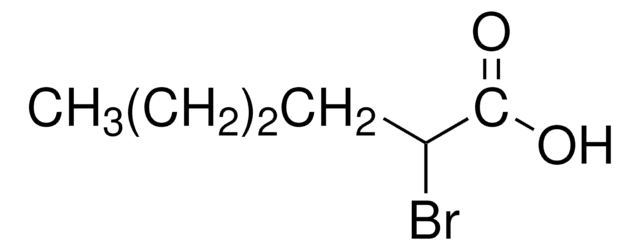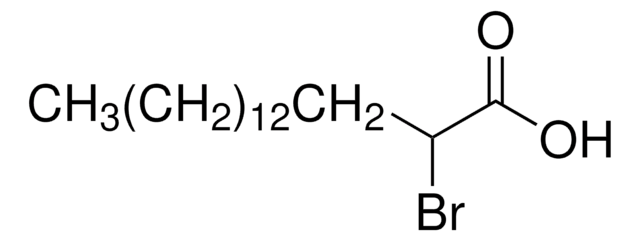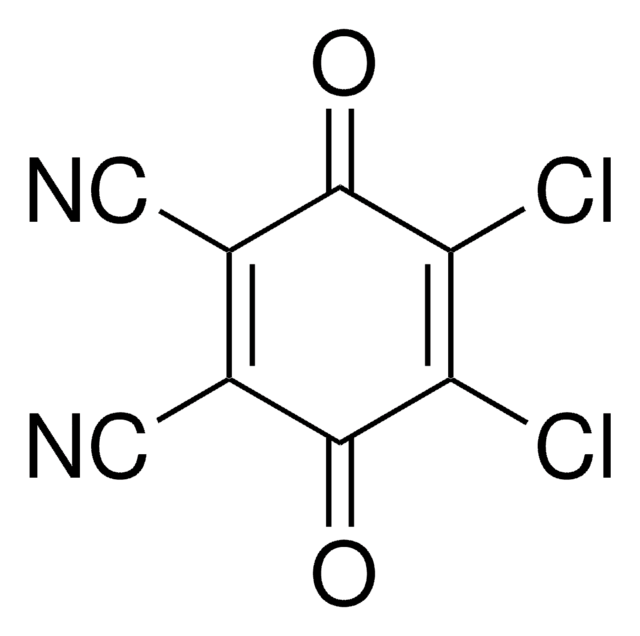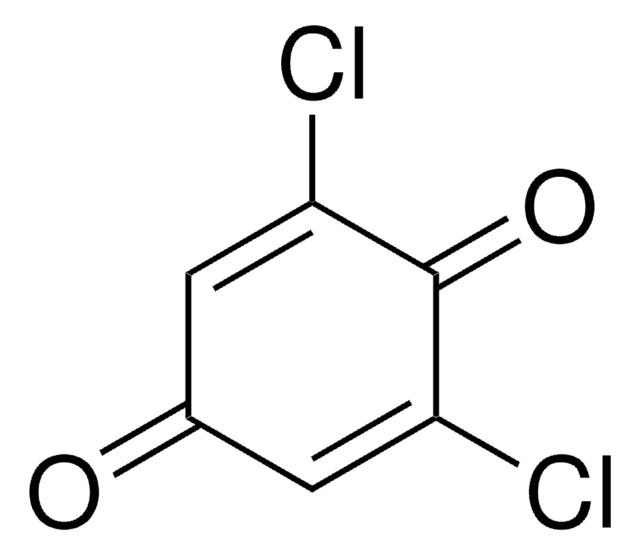280348
2-Bromooctanoic acid
97%
Synonym(s):
2-Bromocaprylic acid
About This Item
Recommended Products
Quality Level
assay
97%
contains
Silver Wool as stabilizer
refractive index
n20/D 1.471 (lit.)
bp
140 °C/5 mmHg (lit.)
density
1.278 g/mL at 25 °C (lit.)
functional group
bromo
carboxylic acid
SMILES string
CCCCCCC(Br)C(O)=O
InChI
1S/C8H15BrO2/c1-2-3-4-5-6-7(9)8(10)11/h7H,2-6H2,1H3,(H,10,11)
InChI key
GTGTXZRPJHDASG-UHFFFAOYSA-N
Looking for similar products? Visit Product Comparison Guide
General description
signalword
Danger
hcodes
Hazard Classifications
Skin Corr. 1B
Storage Class
8A - Combustible corrosive hazardous materials
wgk_germany
WGK 3
flash_point_f
Not applicable
flash_point_c
Not applicable
ppe
Faceshields, Gloves, Goggles, type ABEK (EN14387) respirator filter
Choose from one of the most recent versions:
Certificates of Analysis (COA)
Don't see the Right Version?
If you require a particular version, you can look up a specific certificate by the Lot or Batch number.
Already Own This Product?
Find documentation for the products that you have recently purchased in the Document Library.
Chromatograms
suitable for GCOur team of scientists has experience in all areas of research including Life Science, Material Science, Chemical Synthesis, Chromatography, Analytical and many others.
Contact Technical Service







